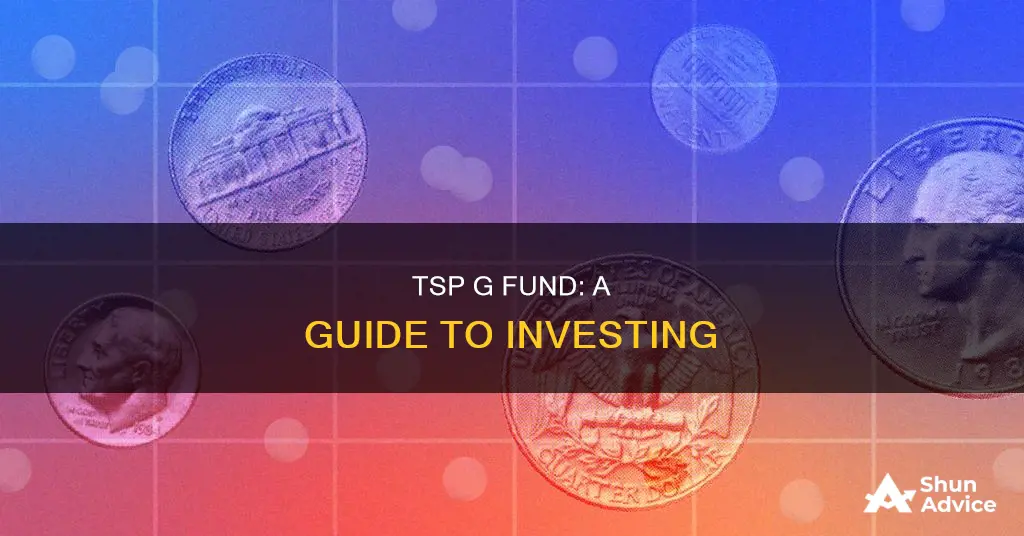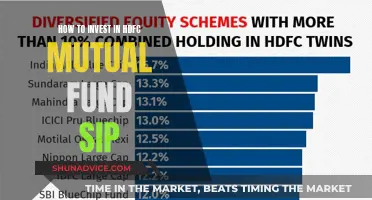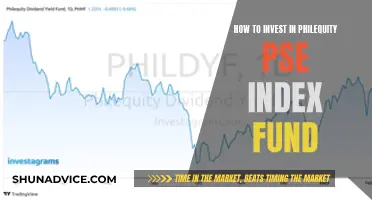
The Thrift Savings Plan (TSP) is a retirement investment program offered to US government employees. One of the five core mutual funds available in the TSP is the G Fund, a low-volatility, virtually risk-free US bond fund. The G Fund is invested in short-term US Treasury securities, which are specially issued to the TSP by the US government. This fund is intended for conservative investors who want to protect their money and are willing to prioritise stability and capital preservation over potentially greater long-term growth.
| Characteristics | Values |
|---|---|
| Name | Government Securities Investment Fund (G Fund) |
| Investment Type | Very low-risk, low-yield government bonds |
| Investment Objective | Preservation of capital and returns above short-term U.S. Treasury securities |
| Suitability | Conservative investors, capital preservation |
| Risk Level | Low volatility, virtually risk-free |
| Returns | Historical annualized return of 4.2% since August 1990, YTD return of 3.47%, 1-year return of 4.55% |
| Interest Rate | 3.875% as of October 2024, calculated monthly based on U.S. Treasury securities with 4+ years to maturity |
| Credit Risk | None, payment guaranteed by the U.S. Government |
| Inflation Risk | Possible that investment won't grow enough to offset inflation |
| Fees | Net administrative expense ratio: $0.490/$1,000 account balance (0.049%) |
| Inception Date | April 1, 1987 |
| Top Holdings | U.S. Treasury securities |
What You'll Learn
- The G Fund's investment objective: Preservation of capital and returns above short-term US Treasury securities
- G Fund's historical performance: 4.2% compound annualized return since August 1990
- G Fund Yield Advantage: G Fund rate calculated using long-term rates for short-term securities
- G Fund's suitability for your retirement account: G Fund is a good option if you want a portion of your retirement account to be protected from loss
- G Fund's comparison to other risk-free investments: G Fund interest rates are higher than Bank CDs and 3-month Treasury Bill yields

The G Fund's investment objective: Preservation of capital and returns above short-term US Treasury securities
The G Fund's investment objective is to ensure the preservation of capital and generate returns above those of short-term US Treasury securities. The fund is a low-volatility, virtually risk-free US bond fund. It is invested in short-term US Treasury securities specially issued to the Thrift Savings Plan (TSP).
The G Fund is unique among the TSP funds in that it does not invest in an index. Instead, it invests in a special non-marketable treasury security issued specifically for the TSP by the US government. This means that the payment of G Fund principal and interest is guaranteed by the US government. There is no credit risk, and the fund is redeemable on any business day with no risk to the principal.
The G Fund rate is calculated by the US Treasury as the weighted average yield of approximately 191 US Treasury securities on the last day of the previous month. The interest paid by the G Fund is set to the average rate of return of US Treasury securities with four or more years to maturity. This means that the G Fund earns a long-term interest rate on short-term securities, resulting in a higher rate of return than short-term marketable Treasury securities.
The G Fund has historically provided the lowest rate of return of any of the core TSP funds, and it may not keep up with inflation. However, it is a good option for investors who want to protect all or a portion of their TSP account completely from loss.
Index Funds: When to Invest for Maximum Returns
You may want to see also

G Fund's historical performance: 4.2% compound annualized return since August 1990
The Thrift Savings Plan (TSP) is a retirement savings plan for federal employees and members of the uniformed services. The TSP G Fund, or Government Securities Investment Fund, is a unique and secure investment option within the TSP. The G Fund is designed to provide a stable and low-risk investment choice for participants.
The G Fund has a historical performance record that reflects its role as a safe investment option for retirement investors seeking to protect their principal. The fund has earned a compound annualized return of 4.2% since August 1990, with a year-to-date return of 3.47% and a 1-year return of 4.55%. This means that a $1,000 investment in 1990 would be worth $4,134 today.
The G Fund's performance has been consistently stable, making it a benchmark for security among TSP investment options. It is considered a secure investment due to its unique structure of investing in short-term U.S. Treasury securities that are guaranteed by the U.S. government. This eliminates the risk of default, as both the principal and interest payments are backed by the government's credit.
The G Fund's rate of return is calculated by taking the monthly interest income generated by the fund's assets and dividing it by the fund's asset value at the start of the month. This provides a monthly rate that can be annualized to understand the yearly performance. The G Fund's interest rate is currently 3.875% as of October 2024 and is calculated monthly, based on the average yield of U.S. Treasury securities with 4 or more years to maturity.
While the G Fund's returns may be lower compared to equity funds during bullish markets, it remains an invaluable component of a diversified retirement strategy, especially during economic downturns. The G Fund's performance is not subject to market volatility, making it an attractive option for risk-averse investors seeking capital preservation and a steady return.
Hedge Fund Investment Guide for Australians: Getting Started
You may want to see also

G Fund Yield Advantage: G Fund rate calculated using long-term rates for short-term securities
The G Fund is part of the Thrift Savings Plan (TSP), a retirement investment program offered to US federal employees and members of the uniformed services. The G Fund is invested in short-term US Treasury securities, which are specially issued to the TSP by the US government.
The G Fund rate is calculated by the US Treasury as the weighted average yield of approximately 191 US Treasury securities on the last day of the previous month. This calculation results in a long-term rate being earned on short-term securities. This is because long-term interest rates are generally higher than short-term rates, so G Fund securities usually earn a higher rate of return than short-term marketable Treasury securities.
The G Fund interest rate is calculated monthly, based on the average yield of all US Treasury securities with four or more years to maturity. As of October 2024, the G Fund interest rate was 3.875%. The G Fund has earned a compound annualized return of 4.2% since August 1990. Its year-to-date return is 3.47%, and its 1-year return is 4.55%.
The G Fund is the lowest-risk fund of the five core TSP funds. It is intended for conservative investors who want to protect their money and are less interested in the potential for greater long-term growth. The payment of G Fund principal and interest is guaranteed by the US government, so there is no credit risk.
Lump Sum Investing: Choosing the Right Fund for You
You may want to see also

G Fund's suitability for your retirement account: G Fund is a good option if you want a portion of your retirement account to be protected from loss
The G Fund is a suitable option for your retirement account if you want a portion of your money to be protected from loss. The G Fund is a government securities investment fund, investing in very low-risk, low-yield government bonds. The fund is backed by the US government, which guarantees the payment of principal and interest. This means that the US government will always make the required payments, and there is no credit risk.
The G Fund is a good option for those who prioritise the stability and preservation of their money over the potential for greater long-term growth through investments in other funds. The fund's objective is to preserve capital and generate returns above those of short-term US Treasury securities. The G Fund is also the only core fund in the Thrift Savings Plan (TSP) that does not invest in an index. Instead, it invests in special non-marketable treasury securities issued specifically for the TSP by the US government.
The G Fund has the lowest risk of the five core funds in the TSP, and it is popular among investors because it never has a losing day. During the Great Recession of 2008-2009, many TSP investors moved their money from stock funds to the G Fund. However, it is important to note that the G Fund is subject to inflation risk, and its low return may result in a loss of purchasing power over time.
The G Fund is intended for very conservative investors and is suitable for those who want to protect their retirement savings from potential losses. However, it is important to consider the potential opportunity cost of investing in the G Fund, as it may not provide the same growth opportunities as other funds.
Global Funds: Where to Invest and How to Start
You may want to see also

G Fund's comparison to other risk-free investments: G Fund interest rates are higher than Bank CDs and 3-month Treasury Bill yields
The G Fund is a government securities investment fund offered by the Thrift Savings Plan (TSP). It is a safe investment option, as the US government guarantees the payment of the G Fund principal and interest. This means that there is no credit risk involved. The G Fund's investment objective is to ensure the preservation of capital and generate returns above those of short-term US Treasury securities.
When comparing the G Fund to other risk-free investments, it is important to consider its interest rate, which is calculated monthly based on the average yield of US Treasury securities with four or more years until maturity. As of October 2024, the G Fund interest rate stood at 3.875%. This rate has fluctuated between 0.75% and 5.00% since 2012.
Bank Certificates of Deposit (CDs) are considered safe-haven investments, offering modest returns with little to no risk of losing the principal amount. CDs are available from banks or credit unions and typically offer slightly higher interest rates than regular savings accounts. In February 2023, 3-month CDs were offering rates of around 4.65%. While CDs provide a safe investment option, it is important to consider the impact of inflation on their returns.
US Treasury Bills are another safe investment option, backed by the full faith and credit of the US government. The iShares 0-3 Month Treasury Bond ETF, for example, seeks to provide investors with exposure to US Treasury bonds with remaining maturities of three months or less. As of October 18, 2024, this ETF had a year-to-date return of 4.27%.
When comparing the G Fund to other risk-free investments, it is evident that its interest rates are often higher than those of Bank CDs and 3-month Treasury Bills. For example, in July 2013, the G Fund interest rate was 2.125%, while the best Bank CD rates for 3-month and 5-year terms were 0.45% and 1.8%, respectively. Additionally, the G Fund rate has consistently been higher than the 3-month Treasury Bill yield, as illustrated in the historical chart provided by tspfolio.com.
In summary, the G Fund compares favourably to other risk-free investments due to its higher interest rates. While Bank CDs and Treasury Bills offer stable and modest returns, the G Fund has a strong track record of providing competitive rates, making it an attractive option for investors seeking capital preservation and stable returns.
Monthly Mutual Fund Investments: A Smart, Secure Financial Strategy
You may want to see also
Frequently asked questions
The payment of G Fund principal and interest is guaranteed by the U.S. Government. This means that the U.S. Government will always make the required payments. The G Fund has earned a compound annualized return of 4.2% since August 1990.
The G Fund is subject to the possibility that your investment will not grow enough to offset the reduction in purchasing power that results from inflation (inflation risk). Due to historically unprecedented Fed stimulus and low-interest rates, the TSP G Fund no longer outpaces inflation as of 2020.
Consider investing in the G Fund if you would like to have all or a portion of your account completely protected from loss. If you choose to invest in the G Fund, you are placing a higher priority on the stability and preservation of your money than on the opportunity to potentially achieve greater long-term growth in your account through investment in other funds.







